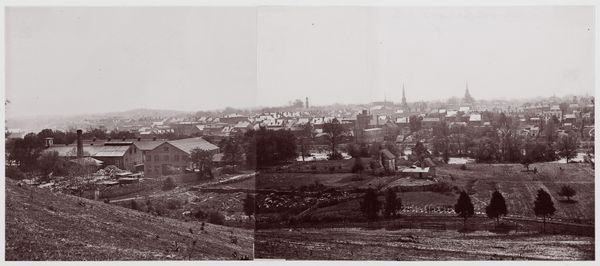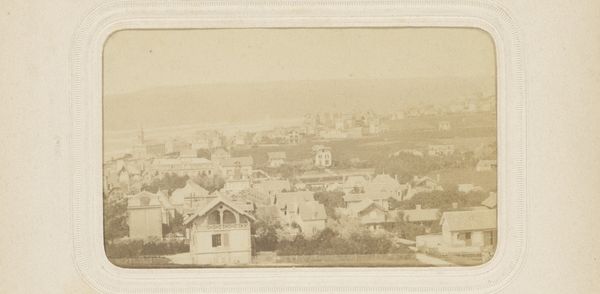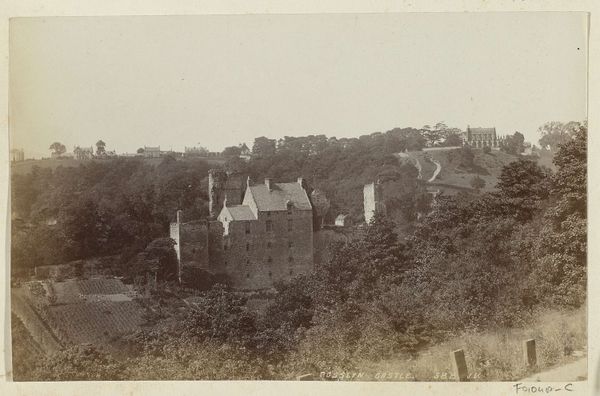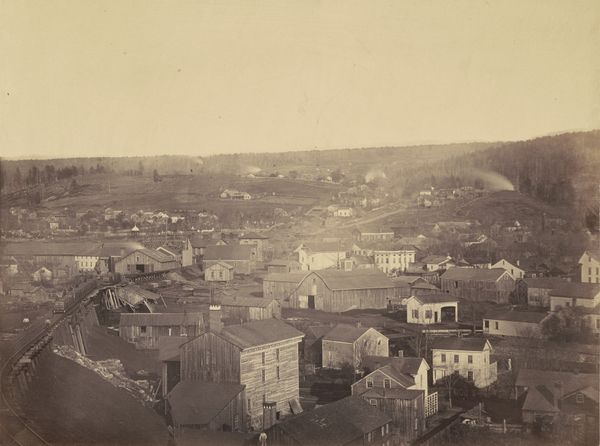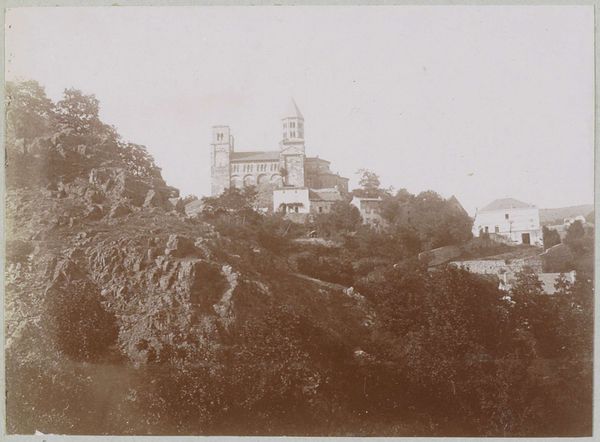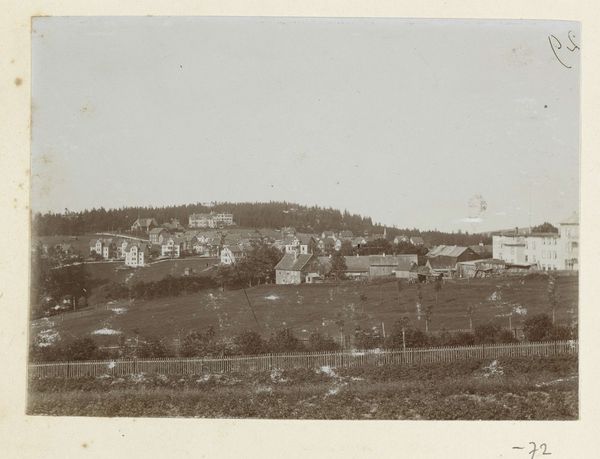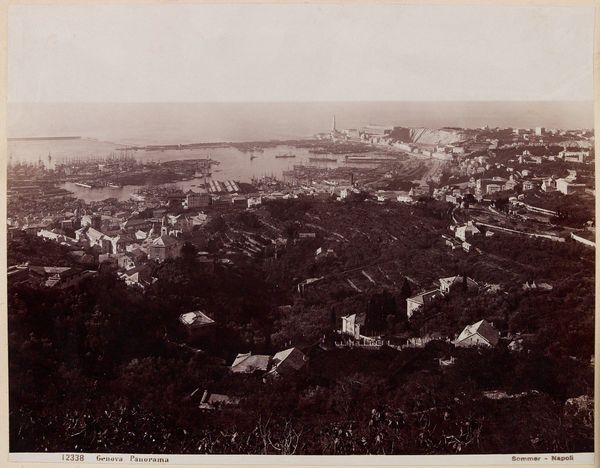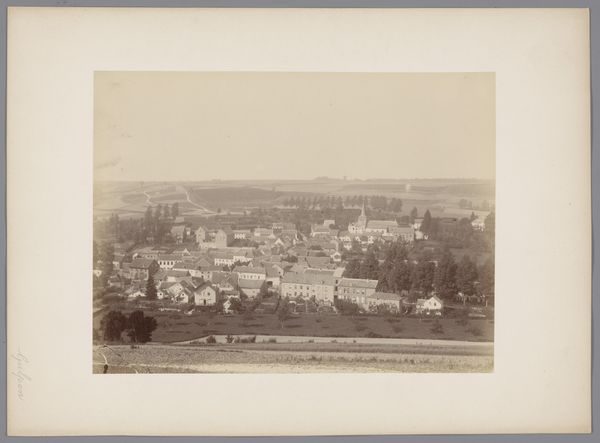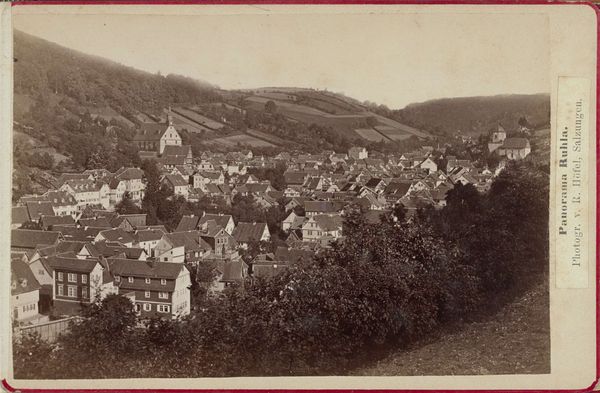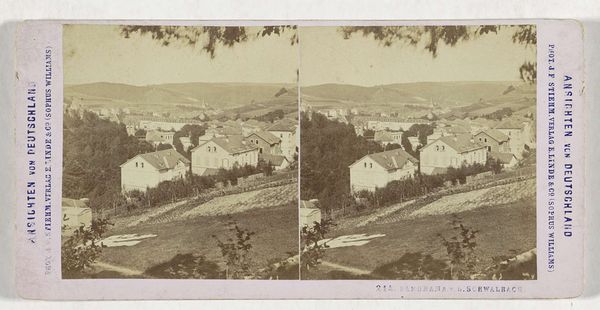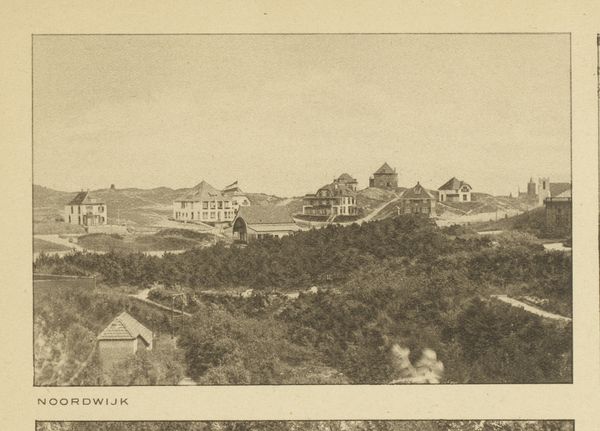
photography, albumen-print
#
pictorialism
#
landscape
#
german-expressionism
#
nature
#
photography
#
cityscape
#
albumen-print
Dimensions: height 81 mm, width 107 mm
Copyright: Rijks Museum: Open Domain
Curator: Here we have a photograph titled "Gezicht op Rothenburg ob der Tauber," dating back to 1900. The work employs the albumen print technique. What are your first thoughts? Editor: There's a hazy, almost dreamlike quality to it. A sense of stillness, like a memory fading at the edges. Curator: Absolutely. Note the masterful composition. The walled city occupies the higher ground, the apex of a carefully orchestrated visual hierarchy, doesn’t it? Editor: The choice of vantage point certainly privileges the built environment, the houses dotted below seem small and insignificant in contrast. I'm curious, what relationship were the inhabitants meant to have with this place? Was it idyllic, or was the city a fortress looming above their daily lives? Curator: An excellent question. Let's examine the tonal range. The photographer's skilled manipulation of light and shadow, particularly evident in the rendering of the city walls and rooftops, contributes significantly to the overall aesthetic. Editor: While you highlight the technical aspects, which are undeniable, I keep wondering about the narratives excluded from this idealized depiction. Where are the marginalized voices of Rothenburg? Did this photograph become propaganda? The workers, women, ethnic minorities, are they represented in the framing of German national identity? Curator: You raise crucial questions of representation, no doubt. Considering its categorization within German Expressionism, the artwork perhaps encapsulates the period’s prevailing yearning for national romanticism—it is important that the picture conveys historical continuity. Editor: Perhaps. However, German Expressionism was never without contradiction: in fact, what this photo conveys is also an expression of power. The high angle of the camera reinforces social distinctions, reminding us of the structures—architectural, social, political—that determine whose stories are valued and whose are silenced. Curator: An incisive reading, one that allows us to appreciate the work’s historical context alongside its visual elegance. Thank you. Editor: A worthwhile deconstruction. It encourages reflection, even debate. Thank you too.
Comments
No comments
Be the first to comment and join the conversation on the ultimate creative platform.
